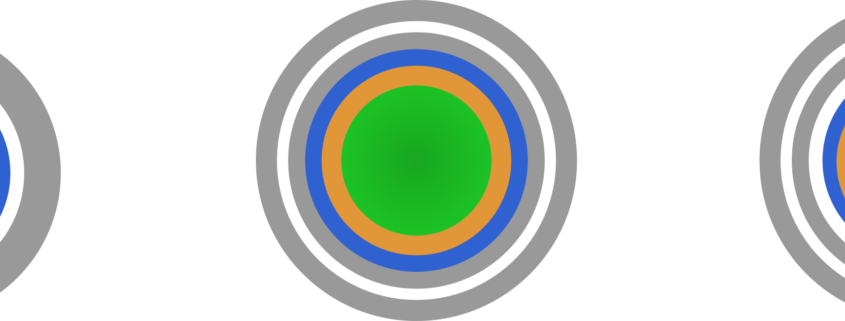Abstract on Metoprolol pellets
Metoprolol Tartrate is a salt of Metoprolol, a selective β1-receptor blocker medication. The application is the treatment of high blood pressure, chest pain due to poor blood flow to the heart, and several conditions involving an abnormally fast heart rate [2]. In the following, an attempt is shown, wherein MCC spheres are used as starter cores for a multi-layer pellet formulation.
This case study is a short abstract of the publication by P. Wanasawas et al. [1] and presents controlled release Metoprolol Tartrate layered pellets achieving colon-specific drug delivery.
Pellet technology attempt
In the following, in-situ calcium pectinate-coated MCC pellets (CELLETS® 700) were proposed by applying an alternate coating method to drug-layered pellets to achieve colon-specific drug delivery. Using a centrifugal granulator, inert MCC pellets were layered by a Metoprolol Tartrate water-soluble model drug. A protective HPMC layer helps to strengthen cracks or delamination from the core in the later stage of the coating processes. Then, alternate coatings of pectin and calcium chloride layers were spray coated by fluidized bed bottom spray technology (GPCG-1, Glatt®, Germany). This technology allows achieving uniform coating layers. The subcoating with pectin and calcium pectinate polymers allow site-specific drug delivery targeting the colon due to their low water solubility. Both excipients additionally degraded completely by gut microflora [3].
By testing different composition in multilayer coatings with calcium and pectin, some interesting phenomena are stated:
- the release behavior follows the Higuchi model
- the drug release can be described by a diffusion control mechanism
- the coating of the outermost layer defines the success in controlled drug release
The latter point issues the importance of the outermost layer which is whether composed by pectin or calcium. In case of calcium, the drug release was accelerated independently of the number of Ca/P layers, such that a 4-layer system (P/Ca/P/Ca) yield a faster drug release that a 3-alyer system (P/Ca/P), see Figure 1. This is explained by the effect of the calcium ions in the outermost layer, leading to a weakening in the calcium pectinate coating layer.

Figure 1: Metoprolol pellets. From left to right: Ca/P, P/Ca/P, Ca/P/Ca/P layered pellets. Colors: Cellets as MCC pellet (green), Metoprolol Tartrate (orange), Talcum (blue), Calcium (white), Pectin (grey).
Once, pectin is the component in the outermost layer, this led to a difference in drug release at neutral and slightly acidic conditions of the dissolution media. While in a neutral pH 7.4 buffer, the dissolution kinetics were comparable for a P/Ca/P-system and Ca/P-system, the situation changes in a slightly acidic buffer at pH 6.0. In a phosphate buffer at pH 6.0 the dissolution of a P/Ca/P-system was faster than of a Ca/P-system due to the almost complete ionization of pectin at pH 6.0.
Summary
This case study highlights the controlled release profile of Metoprolol Tartrate as a water-soluble model drug. The formulation is based on CELLETS® 700, which serve as inert MCC spheres. By a variation in the multi-layer composition of calcium and pectin, the dissolution kinetics and controlled release profiles were examined.
Acknowledgement
This research was funded by Thailand Research Fund through Royal Golden Jubilee Ph.D. Program, grant number PHD/00005/2541.
References
[1] P. Wanasawas, A. Mitrevej, N. Sinchaipanid, Pharmaceutics 14 (2022) 1061, https://doi.org/10.3390/pharmaceutics14051061
[2] The American Society of Health-System Pharmacists. Archived from the original on 12 March 2014. Retrieved 21 April 2014. https://web.archive.org/web/20140312062359/http://www.drugs.com/monograph/metoprolol-succinate.html
[3] M. Khotimchenko, Int. J. Biol. Macromol. 158 (2020) 1110-1124. https://doi.org/10.1016/j.ijbiomac.2020.05.002



 ingredientpharm
ingredientpharm